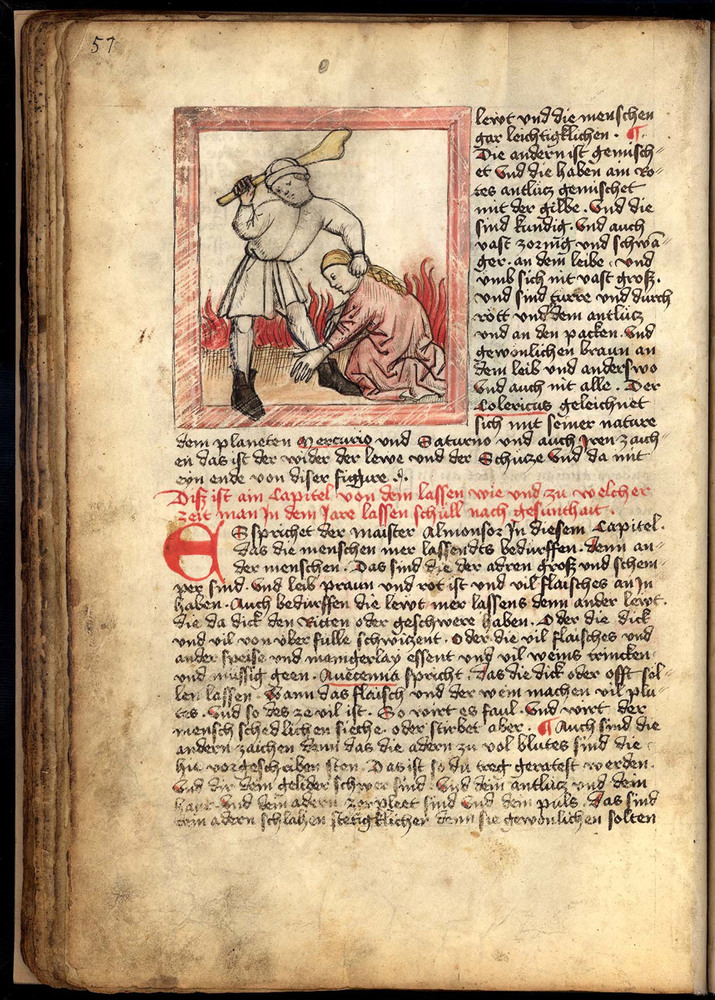Look Back in Anger: Anger, Religion, and Morality through the Ages
Medieval Anger

A fifteenth-century German manuscript depicting the choleric personality in the imagery of a man beating a woman with a cudgel, flames in the background used to illustrate a hot temper.
View full item in the Atla Digital Library
Western medieval anger is often defined by “the humours” an ancient biological theory that humans are made up of four humours, or temperaments: the choleric, the sanguine, the melancholic, and the phlegmatic. Anger is a part of the choleric temperament, and often depicted as hot and fiery since the humoural definition of anger was marked as hot. We see this depicted in our first exhibit item: the choleric man of the fourteenth century German Hausbuch. Following that, we have items that are examples of the dichotomy between the vice of anger and the virtue of patience in the carved stones of a medieval cathedral in France.

From the Cathedral of Notre Dame in Amiens, France: a carved quatrefoil example of a woman stabbing a man in anger.
View full item in the Atla Digital Library.

On the same Notre Dame cathedral in Amiens, France as the carved quatrefoil depicting anger as a woman stabbing a man, there is a medieval carved quatrefoil of Patience, calmly looking down with a gentle smile at the shield in her arms.
View full item in the Atla Digital Library.
